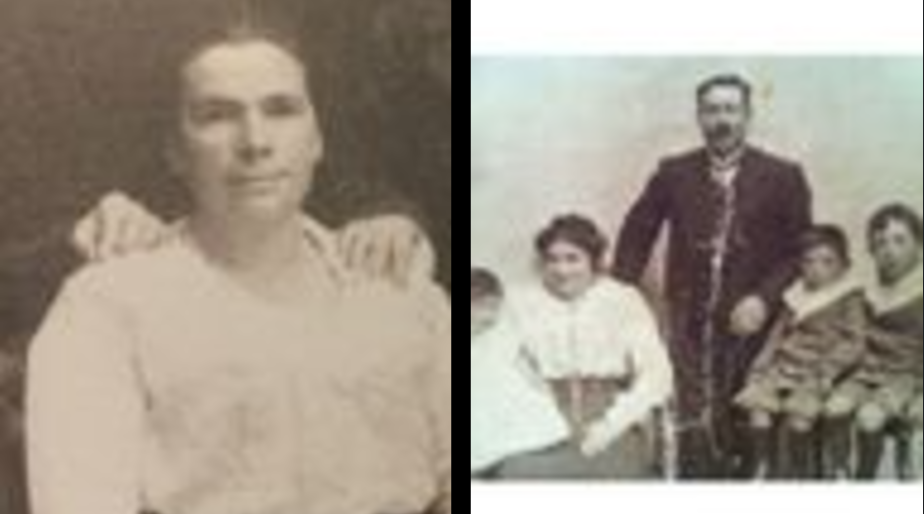Maria Tomasso’s life embodies the resilience and determination of immigrants in early 20th-century America. Born around 1910 in Rhode Island to parents of Italian descent, her story offers a window into the experiences of immigrant families striving for stability and success in a rapidly changing world. With three siblings, including Clara Tomasso, Maria Tomasso navigated the challenges of her time while contributing to her family and community. This article delves into Maria’s life, exploring her family, career, legacy, and the broader context of her era.
The Tomasso Family: A Foundation of Support and Perseverance
Maria Tomasso was born into a close-knit family that reflected the communal spirit of immigrant households. Her parents, likely Italian immigrants, brought with them the traditions, values, and dreams of their homeland. Life in Rhode Island was not without its difficulties; immigrant families often faced economic hardship, linguistic barriers, and social discrimination.
Maria Tomasso’s siblings, including her sister Clara and two others, played an essential role in shaping her early years. In many immigrant families, children contributed to the household by working or assisting with daily chores. This sense of shared responsibility fostered a bond among the siblings that lasted throughout their lives.
The Tomasso household also served as a cultural anchor, preserving Italian traditions while adapting to American life. Sundays were likely filled with family dinners, storytelling, and the rich aroma of homemade pasta—a blend of old-world customs and new-world aspirations.
Growing Up in Rhode Island: Challenges and Opportunities
As a young girl in Rhode Island, Maria Tomasso witnessed the bustling activity of an industrial state. Rhode Island, at the time, was a hub for manufacturing and textile production. Immigrant families, including the Tomassos, often settled in urban areas where work opportunities were abundant but demanding.
Mary’s education likely took place in a local public school, where immigrant children were immersed in English and American customs. The experience was both enriching and challenging, as Mary had to navigate the cultural gap between home and school. Despite these obstacles, her formative years equipped her with resilience and adaptability—traits that would serve her well throughout her life.
Living in Rhode Island also exposed Maria Tomasso to a vibrant immigrant community. Festivals, markets, and community gatherings provided a sense of belonging and allowed families like hers to celebrate their heritage. These events reinforced the importance of unity and cultural pride in a foreign land.
A Career Born of Necessity and Determination
For many immigrant women of Maria Tomasso’s generation, work was an integral part of life. While records of Mary Tomasso’s specific career path are scarce, it is likely she followed the trends of the time. Women in her position often worked in factories, as seamstresses, or in domestic roles. These jobs, though physically demanding, were vital in supplementing the family income and establishing a foothold in the economy.
Mary’s dedication to her work would have reflected her commitment to supporting her family and achieving a measure of independence. Whether she worked in Rhode Island’s thriving textile industry or another field, her contributions were undoubtedly significant. For immigrant women, work was not merely a means of survival but a way to prove their capability and determination in a society that often underestimated them.
Family Values and Personal Legacy
As Maria Tomasso grew older, her role within the family evolved. She became a pillar of strength for her siblings and a model of perseverance for younger relatives. The close bond she shared with Clara and her other siblings remained a cornerstone of her life, reflecting the enduring importance of family in immigrant communities.
Mary’s personal legacy is one of quiet strength and resilience. Her life, though ordinary in some respects, was extraordinary in its demonstration of the immigrant spirit. By working hard, maintaining close family ties, and navigating the challenges of her time, Mary exemplified the virtues of determination, adaptability, and hope.
Her story is a testament to the contributions of immigrant families who helped shape the fabric of American society. Though the details of her life may be sparse, her impact resonates in the lives of her descendants and the communities she touched.
The Broader Context: Immigrants in Early 20th-Century America
Maria Tomasso’s life cannot be fully appreciated without understanding the broader context of her time. The early 1900s saw a wave of immigration to the United States, with millions of people arriving from Europe in search of a better future. Italian immigrants, in particular, faced unique challenges, including economic instability and prejudice.
Despite these difficulties, immigrant communities thrived by creating supportive networks and embracing hard work. Women like Mary played a crucial role in this success, balancing work, family, and community obligations. Their efforts laid the groundwork for future generations to achieve the American Dream.
In Rhode Island, the influence of immigrant families was particularly evident in the state’s industrial growth and cultural landscape. Mary’s contributions, though part of a larger narrative, are a reminder of the individual lives that collectively shaped this history.
Conclusion: A Life of Quiet Significance
Mary Tomasso’s story is one of resilience, family values, and the enduring spirit of immigrants in America. Born in Rhode Island around 1910, she navigated a world of challenges with determination and grace. Her close ties with her siblings, her dedication to work, and her ability to preserve her heritage while embracing new opportunities highlight the strength of immigrant women in shaping the nation’s history.
Though the details of her life may be limited, Mary’s legacy lives on in the values she embodied and the impact she had on those around her. Her story reminds us of the sacrifices and contributions of countless immigrants who built the foundation of modern America.
FAQs
Who was Maria Tomasso?
Maria Tomasso was an immigrant born around 1910 in Rhode Island to Italian parents. She grew up in a close-knit family with three siblings, including Clara Tomasso.
What challenges did Maria Tomasso face?
Maria Tomasso challenges common to immigrants in early 20th-century America, including economic hardship, social discrimination, and the need to balance traditional values with new cultural expectations.
What was Maria Tomasso’s career?
While specific details of Mary’s career are not documented, it is likely she worked in industries common to women of her era, such as textile manufacturing, domestic service, or similar fields.
What is Mary Tomasso’s legacy?
Mary’s legacy lies in her resilience, dedication to family, and contributions to her community. Her story reflects the broader experiences of immigrant families who helped shape America.
How does Mary’s story reflect the immigrant experience in America?
Mary’s life exemplifies the struggles and triumphs of immigrant families, including the importance of hard work, family bonds, and cultural preservation in achieving success and belonging.
Why is Mary Tomasso’s story significant?
Though she lived an ordinary life, Mary’s story is significant as a representation of the countless unsung individuals who played a vital role in America’s history and development.




